Are you feeling overwhelmed and stressed out? Maybe you’re trying to find a way to relax and reduce the effects of everyday life. If so, you should consider getting a massage. Massage therapy offers numerous health benefits and can help with relaxation, healing, and overall well-being. In this article, we’ll discuss why you should get a massage and uncover the incredible benefits it can provide.
Contents
Benefits of Massage
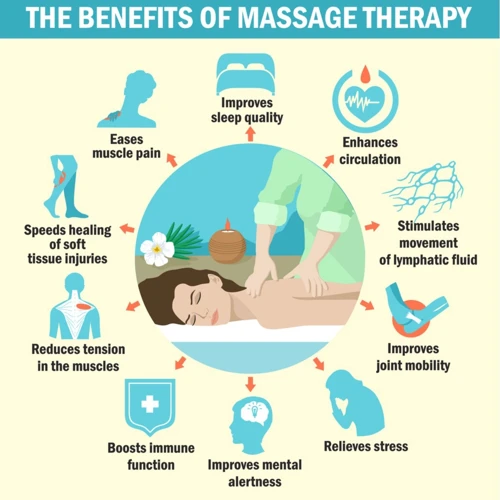
Relaxation
Massage helps to relax the body, mind, and soul. It can reduce stress and tension, allowing for an improved sense of wellbeing. In addition, massage can help to promote better sleep, a more relaxed state of mind and improved mood.
Improve Circulation
Massage can help to improve circulation and increase blood flow throughout the body. Increased circulation can help to reduce inflammation and improve overall health.
Reduce Muscle Tension
Massage can help to reduce muscle tension and tightness. This can help to improve range of motion and flexibility, as well as reduce pain and soreness.
Reduce Stress
Massage can be a great way to reduce stress and tension. It can help to create a calm and relaxed state of mind, allowing for improved mental clarity and focus.
Improve Mobility
Massage can help to improve mobility and range of motion. This can be especially beneficial for those who have experienced an injury or are looking to improve athletic performance.
Improve Posture
Massage can help to improve posture by loosening tight muscles and promoting better alignment. This can help to reduce pain and improve overall balance.
Reduce Pain
Massage can be an effective way to reduce pain and discomfort. It can help to reduce inflammation and promote faster healing, as well as improve overall mobility and flexibility.
Who needs massage? Anyone who is looking to reduce stress, tension, and pain, or improve their overall wellbeing can benefit from massage. Whether you are looking for relaxation or relief from pain, massage can be a great way to promote health and wellbeing.
Improve Immunity
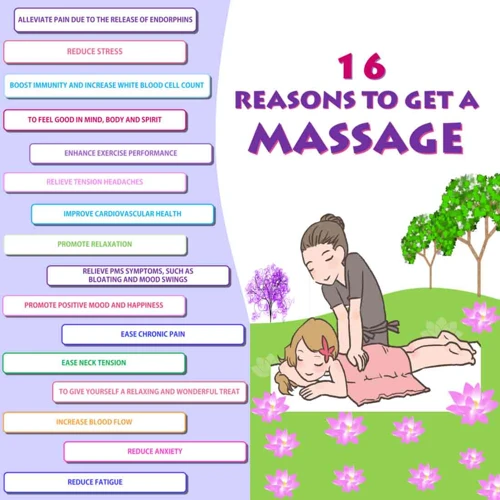
- Getting a massage regularly boosts the body’s immune system and helps to ward off infections and illnesses.
- Massage can help reduce stress hormones, which can weaken the body’s immune system.
- Massage increases the production of white blood cells which are essential for fighting off disease.
- Massage has been found to reduce cortisol levels which can prevent the body from becoming overly stressed.
- The combination of increased white blood cells and decreased stress hormones enhances the body’s ability to fight off diseases and infections.
Getting a massage regularly is an excellent way to improve your immunity and ward off illnesses. With massage, you can reduce cortisol levels and increase white blood cells, allowing your body to better fight off diseases and infections. Why you should get a massage regularly? It is a great way to relax and unwind, reduce stress, and boost your immune system.
Who Needs Massage?
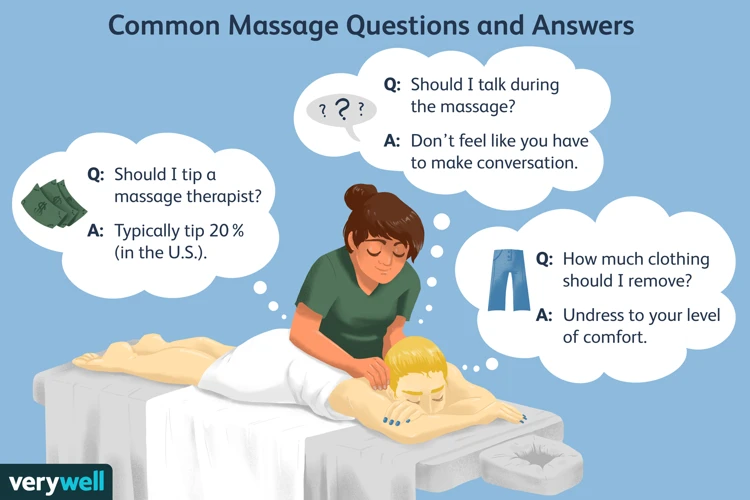
- Athletes – Massage can reduce muscle tension, increase blood flow, and reduce fatigue, making it helpful for athletes.
- Stress relief – Massage can be used to reduce anxiety, improve sleep quality, and reduce stress hormones.
- Pain relief – Massage can be used to relieve chronic pain, headaches, and joint pain, as well as reduce inflammation.
- Pregnant women – Massage can help pregnant women manage their discomfort and reduce swelling.
- Elderly – Massage can help elderly people reduce their risk of falls and improve their balance and flexibility.
Why You Should Get a Massage Regularly
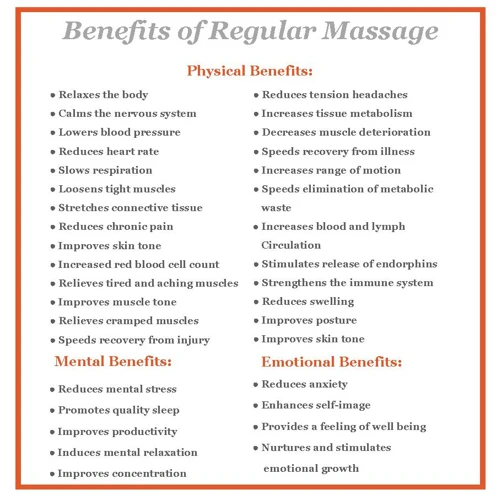
Stress Relief
A massage can be an effective way to reduce stress. It can help to relax tense muscles, ease anxiety, and improve overall wellbeing. Massage can also improve circulation, which can help to reduce stress hormones such as cortisol.
Improved Quality of Life
Massage can help to improve quality of life. It can help to reduce pain, improve mobility, and increase energy levels. Massage can also help to improve sleep, enhance mood, and reduce fatigue.
Maintenance of Physical Health
Massage can help to maintain physical health. It can help to reduce inflammation, improve circulation, and reduce muscle tension. Massage can also help to improve posture, increase flexibility, and reduce the risk of injury.
Improved Mental Health
Massage therapy can help to improve mental health. It can help to reduce anxiety and depression, improve concentration, and increase self-esteem. Massage can also help to reduce stress, improve relaxation, and increase feelings of wellbeing.
Reduced Muscular Tension
Massage can help to reduce muscle tension. It can help to relax tight muscles, reduce pain, and improve range of motion. Massage can also help to reduce muscle stiffness, improve posture, and increase circulation.
Increased Mobility
Massage can help to improve mobility. It can help to reduce joint stiffness, improve flexibility, and increase range of motion. Massage can also help to reduce inflammation, improve circulation, and reduce muscle tension.
Massage Techniques
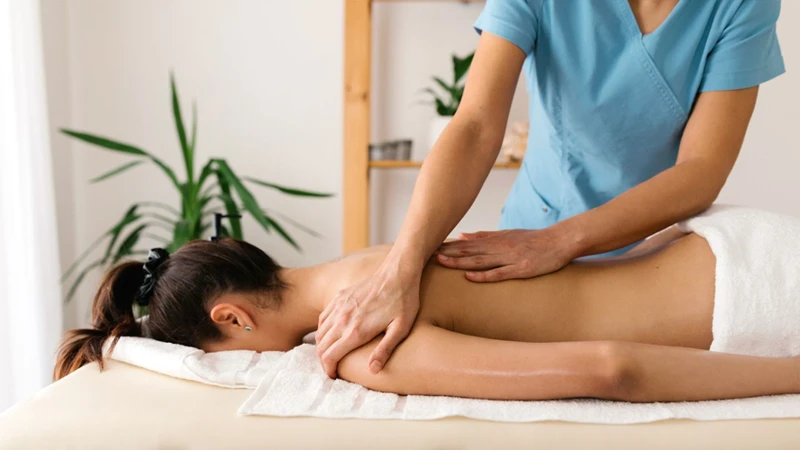
Swedish Massage
Swedish Massage is the most common type of massage. It is a full-body massage that uses long, gliding strokes to reduce tension and stress. It can also improve circulation and flexibility.
Deep Tissue Massage
Deep Tissue Massage is a type of massage that targets the deeper layers of muscle and connective tissue. It is designed to release chronic patterns of tension, reduce inflammation, and improve range of motion.
Hot Stone Massage
Hot Stone Massage is a type of massage that uses heated stones to relax muscles and reduce tension. The stones are placed on the body and heated up to a comfortable temperature.
Shiatsu Massage
Shiatsu Massage is a type of massage that uses finger pressure and stretching techniques to relieve stress and improve circulation. It is based on the principles of Traditional Chinese Medicine.
Thai Massage
Thai Massage is a type of massage that combines gentle stretching and pressure point work. It helps to reduce stress and improve overall wellbeing.
Pregnancy Massage
Pregnancy Massage is a type of massage that is designed to reduce stress and improve circulation in pregnant women. It can also help to reduce fatigue, swelling, and pain.
Sports Massage
Sports Massage is a type of massage that is designed to improve performance and reduce injury. It helps to stretch and loosen tight muscles, improve range of motion, and reduce inflammation.
Trigger Point Massage
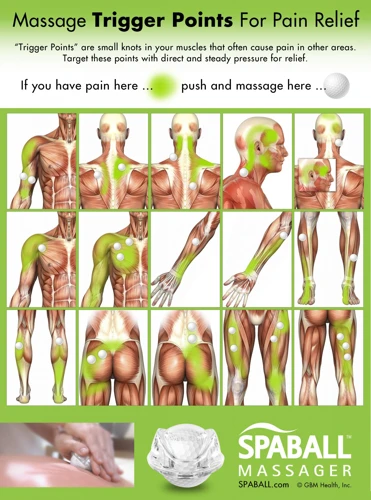
Trigger point massage is a type of massage therapy that focuses on applying pressure to trigger points in the body. Trigger points are tight areas within the muscle tissue that cause pain in other parts of the body. This type of massage helps to relieve pain and restore range of motion. It is often used to treat injuries, muscle tension, and chronic pain.
Benefits of Trigger Point Massage:
| Benefit | Description |
|---|---|
| Pain relief | Relieves pain caused by trigger points and muscle tension. |
| Improved range of motion | Can help improve range of motion and flexibility. |
| Relaxation | Promotes relaxation and helps to reduce stress. |
| Reduce inflammation | Can help reduce inflammation and swelling. |
Trigger point massage is an excellent choice for anyone who is looking to reduce pain, improve range of motion, and relax. It can help to reduce inflammation and swelling, as well as improve circulation. This type of massage therapy can be used on its own or in combination with other types of massage.
Tips for Choosing a Massage Therapist

- Do your research: read reviews and ask for recommendations.
- Look for a therapist who specializes in the type of massage you’re looking for.
- Ensure that the therapist is licensed and certified.
- Check out their experience and qualifications.
- Verify that the therapist is insured.
- Make sure the therapist has a comfortable and clean environment for the massage.
- Ensure that the therapist is willing to answer any questions or concerns you may have.
- Pay attention to their customer service and bedside manner.
- Ask friends and family for their feedback.
What to Expect During a Massage
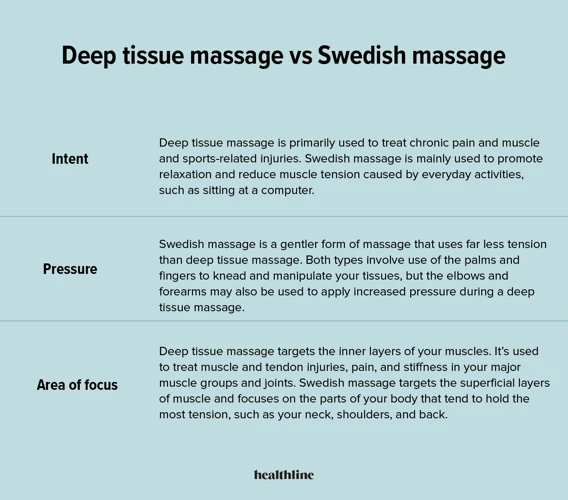
A massage therapist will typically begin the session by asking about your physical condition, medical history, and any areas of the body that you may want them to focus on.
During the massage, the therapist will use a combination of techniques, such as Swedish massage, deep tissue massage, trigger point therapy, and stretching to increase circulation, relax the muscles, and help relieve tension. Soft music, low lighting, and essential oils may also be used to help create a calming atmosphere.
The therapist may also use their hands, fingers, knuckles, elbows, or feet to help work the muscles and release tension. You should always communicate with your therapist if you experience any pain or discomfort.
At the end of the massage, the therapist may offer suggestions for continued care, such as stretching exercises, and lifestyle changes to help relieve tension and promote overall wellness.
Regular massage can help improve your overall health and wellbeing, and is especially beneficial for those who suffer from chronic pain, stress, anxiety, or depression. It can also help athletes by improving flexibility, circulation, and range of motion.
Whether you’re looking for relief from pain or just need a bit of relaxation, massage can be an excellent way to improve your overall health and wellbeing.
Risks of Massage
Although massage therapy is generally safe, some risks exist. Before getting a massage, it’s important to consider the potential for:
- Bruising. Pressure that’s too deep can cause bruising, especially over bony areas. Your massage therapist should adjust the pressure to your comfort level.
- Soreness. You may experience some soreness after a massage, particularly after a deep tissue massage. This should go away within a day or two.
- Infection. Unsterilized massage equipment can spread infections. Make sure your massage therapist uses clean sheets and equipment.
- Joint pain. If you already have joint pain, certain massage techniques can worsen it. Tell your massage therapist if you have joint pain.
It’s important to talk to your doctor before getting a massage if you have any medical conditions or take medications that affect blood circulation or bleeding. It may also be a good idea to ask your massage therapist about any medical conditions they may have.
Who needs massage? Anyone who wants to reduce stress and tension, relax, improve circulation and flexibility, or recover from an injury could benefit from massage. It’s also beneficial for people with chronic illnesses, such as arthritis and fibromyalgia.
Why you should get a massage regularly? Regular massage can help reduce stress levels, improve circulation, and increase energy levels. Additionally, it can help improve your posture and reduce the risk of injury. Regular massage can also help improve the quality of your sleep and reduce fatigue.
Frequently Asked Questions
What Types of Massage Are Available?
Massage therapy comes in a variety of forms, including Swedish massage, deep tissue massage, shiatsu massage, and sports massage. Swedish massage is the most common type of massage and is characterized by long, gliding strokes, while deep tissue massage uses more concentrated pressure to access deeper layers of muscle and connective tissue. Shiatsu massage uses rhythmic finger and palm pressure to stimulate the body’s energy flow, and sports massage is designed to help athletes prepare for and recover from competition.
Are there any risks associated with massage?
No, massage is generally a safe, relaxing and therapeutic form of treatment. However, there are certain precautions that should be taken, such as avoiding massage on areas of the body that are injured, inflamed, or have broken skin. Additionally, pregnant women should always consult their doctor before getting a massage.
What are the long-term benefits of massage?
Massage is an effective way to improve physical and mental health. Regular massage can reduce stress, relieve muscle tension, improve circulation, boost immunity, reduce pain and inflammation, and improve sleep. The long-term benefits of massage include increased energy and vitality, improved posture, better concentration, improved flexibility, and improved mental wellbeing. Massage can also reduce anxiety, depression, and help with addiction recovery. Massage also helps reduce the risk of injury and can help improve athletic performance.
How Often Should I Receive a Massage?
It Depends on Your Needs: The frequency of massage depends on your individual needs and goals. Those who are looking for relaxation and stress relief should receive a massage every 1-2 weeks, while those who are looking for more therapeutic benefits should receive a massage once a month or more.
Specific Conditions: If you have a specific condition such as chronic pain or injury, you should consult with a massage therapist to determine the frequency and duration of massage treatments.
- Chronic pain: Massage once a week for 3-4 weeks then reassess.
- Injury: Massage once a week for 4-6 weeks then reassess.
- Stress relief: Massage every 1-2 weeks.
- Fitness improvement: Massage once a month.
- Relaxation: Massage every 2-4 weeks.
Consider Your Lifestyle: Your lifestyle should also be taken into consideration when determining how often to receive a massage. If you have an active lifestyle or spend a lot of time sitting or on your feet, you should receive a massage more often.
Talk to Your Therapist: Ultimately, your massage therapist is the best person to determine the best massage frequency for you. Talk to them about your goals and lifestyle and they will be able to suggest the best massage treatment plan for you.
Can Massage Help With Pain Management?
Massage has been proven to help with chronic pain conditions like fibromyalgia, arthritis, and low back pain. It can help reduce inflammation, relax muscles, reduce pain, and improve circulation. Massage can also help to reduce anxiety and depression, which can indirectly help to reduce pain. Massage is a non-invasive and natural approach to pain management and can be a powerful ally in the journey to feeling better.
Conclusion
The benefits of massage therapy are plentiful. From stress relief and relaxation to improved blood circulation and reduced pain, massage can help people manage their physical and mental health. It can also promote overall wellbeing and help people to maintain a balanced lifestyle. With regular massage sessions, people can experience the full range of benefits associated with relaxation and healing.

